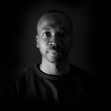Saying No: Saved by Writing
 Pike’s Peak Road
Pike’s Peak RoadIn Colorado Springs for a wedding, with three hours to kill before we could check into our hotel, my 13-year-old and I decided to drive the 19-mile highway up Pike’s Peak. At the entry gate, the guard let us know that there’s a parking lot at the 17-mile mark where we can catch shuttles to the visitor center at the very top and eat the only donuts made at a 14,0000-foot altitude. We pulled away from the visitor center and made our way up the mountain in the rental Corolla. Things went fine for about the first 15 miles.
Then, at about 12,000 feet of elevation, I took a hairpin turn into a steep switchback just as the last of the trees and the guardrail disappeared. There was nothing around me but sky. And a very little bit of road. But mostly sky. Lots and lots of sky. Too much sky.
My head spun for about two seconds. Vision jumped. Lungs suddenly had trouble pulling in air. Panic. I thought. Or altitude sickness too?
Either way, I was in trouble. There was no way to stop and go back down. There were no turnarounds, no shoulders to pull out on, and no room for a three-point-turn. Just sky, cliff, and road. The only way out was up.
Just breathe. I thought, focusing on air intake as I kept driving. In. Out. In. Out.
I found if I trained my eyes to look only at the double yellow line, it was easier to keep my usually-leaden foot steady on the gas pedal. We moved forward at maybe 7 miles per hour. Each glance at the sky above or next to me shot a whole new wave of panic through my body.
Focus on the road in front of you. I thought.
This is where my internal writing angels started talking to me. This is a good metaphor for writing your book, they said. Don’t think about the whole project or you’ll freeze. Just focus on one sentence, one chapter, one step forward.
I did realize how weird this was. Thinking about writing during a panic attack. But then I thought about how I would probably write about this panic attack at some point in the future. I knew I’d want to describe it through body language. So, I noted the feeling of the fabric seat when my shaking leg pressed into it and away and into it again, the smooth solid steering wheel inside the grip that kept my hands from shaking, the sweat on my palms that left me fearful the wheel would slip through their grasp but not so afraid that I was willing to let go and wipe them off, and the way each breath felt like a conscious effort. Noting sensory details became a form of meditation.
These unbidden writerly thoughts did not send my panic away, but they kept it from completely consuming me. I continued driving through hairpin turn after hairpin turn up switchback after switchback. It felt like the road would go on forever, but then I saw the 16-mile marker and things started to flatten out. After only two or three more turns, I pulled into a space in the parking lot where my 13-year-old and I could catch the shuttle to the visitor center.
I sat in my car breathing and trying not to look at the faraway horizon in front of me. I imagined an ending to this story where we took the shuttle to the top of the mountain, ate one of the famed high-altitude donuts, and snapped a celebratory selfie. After all, I suffered this much to get here, shouldn’t I keep going for the payoff?
But as I sat, I also thought about a tidbit I read earlier that afternoon. In 1806, Thomas Jefferson sent Zebulon Pike with a crew of 20 soldiers to explore what is now Colorado and the southwest. When the expedition formed a camp at modern-day Pueblo, Pike spied the mountain that his Ute hosts called Tava — the very mountain I’m now sitting on. Pike made plans for his expedition to ascend Tava in hopes of mapping all the surrounding mountains and valleys.
The expedition began their ascent from Pueblo in November 1806. The team had limited winter gear and limited mountaineering experience. Their heroic attempt stopped at Mt. Rosa, about 60 miles from Pike’s Peak, after they’d gone hungry for 2 days. They didn’t want to die.
Despite his retreat, Zebulon Pike still got the mountain named after him.
I also thought of more recent examples of people making brave retreats: Simone Biles choosing not to compete in the Olympics; Naomi Osaka refusing to give press conferences at the US Open; Harry and Megan deciding not to continue in their jobs as part of the Royal Family. Every one of them cited mental health as a priority in making these decisions. Every one of them is still viewed as powerful.
I decided to follow in these champions’ footsteps. I chose safety. I said no to a possible story ending where I tried to get on that shuttle and the combination of panic and altitude sickness left me vomiting and too dizzy to drive down the mountain. It helped that my 13-year-old didn’t want to take this risk either. So, I took a deep breath, turned the key to restart the Corolla, pulled back out onto the road, and started my descent.

Saying No: Saved by Writing was originally published in CRY Magazine on Medium, where people are continuing the conversation by highlighting and responding to this story.



